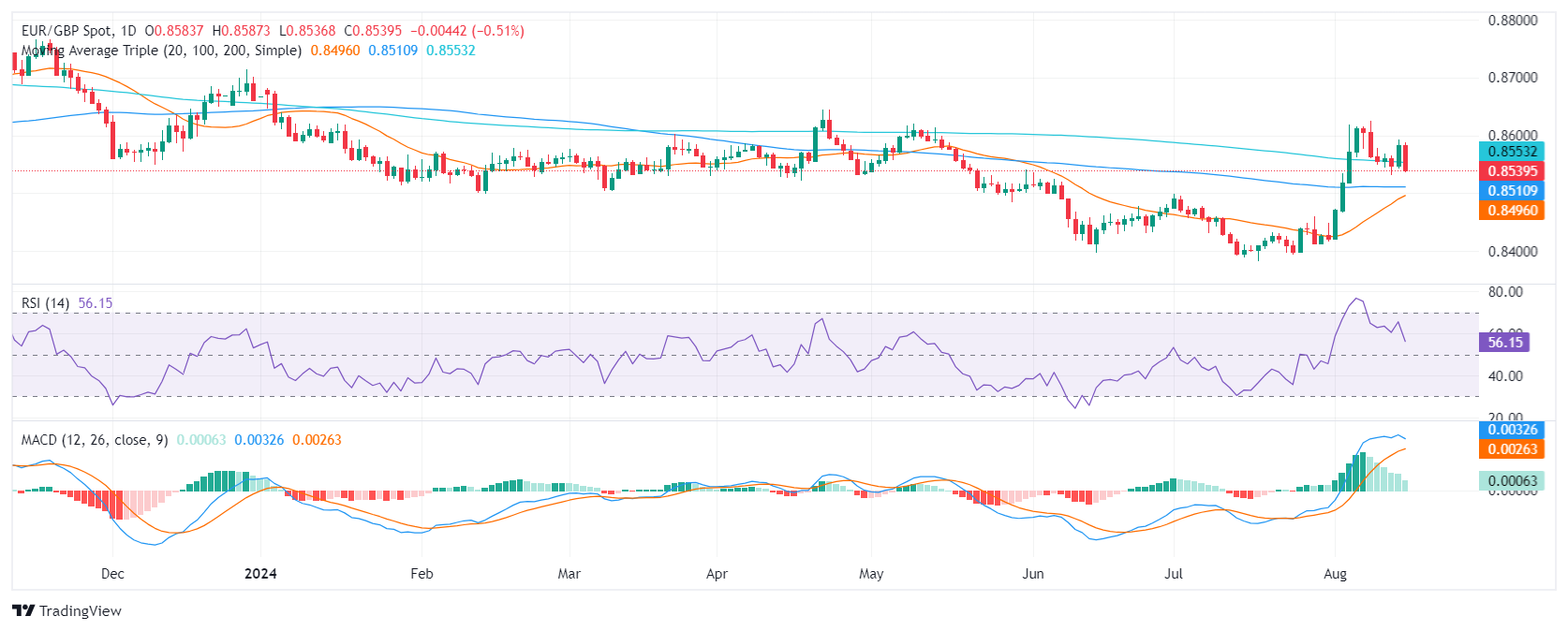EUR/GBP declines following UK GDP data
- EUR/GBP fell to 0.8540, testing a key support level.
- The pair declined despite mixed UK GDP reported during the European sessions.
- The softish economic outlook favors additional cuts from the BoE.
Thursday saw the EUR/GBP pair fall to 0.8540, after mixed Gross Domestic Product (GDP) data from the UK. This comes after Wednesday's movements when the strength of the Pound was suppressed by disappointing UK inflation data.
The UK reported its Q2 Gross Domestic Product (GDP) data, showing a quarterly growth rate of 0.6%, down from 0.7% in Q1. The annual growth rate was 0.9%, an increase from 0.3% in Q1, as expected. Private consumption grew by a weaker-than-anticipated 0.2% quarter-on-quarter, but this was partially balanced by stronger government spending, which increased by 1.4% quarter-on-quarter.
Business investment and net exports negatively impacted growth. Monthly data for June, released simultaneously, indicated a slowdown as the quarter ended: GDP remained unchanged month-on-month, industrial production rose by 0.8%, services decreased by 0.1%, and construction increased by 0.5%. Overall, current data suggests the Bank of England will likely continue cutting rates to support the economy.
EUR/GBP technical analysis
The EUR/GBP shows a mixed trend in recent sessions, with the Relative Strength Index (RSI) moving from mid to high 50s. This suggests a generally bullish or neutral sentiment among traders but with the index now pointing down, it may hint that the sellers are coming. This is backed by the Moving Average Convergence Divergence (MACD) which is showing decreasing red bars, signaling a possible shift towards a bearish sentiment. The volume over the past week has been stable, pointing towards decent liquidity in the pair.
Traders should monitor the 0.8540-0.8590 range as a breakout might fuel sharp movements.
EUR/GBP daily chart


